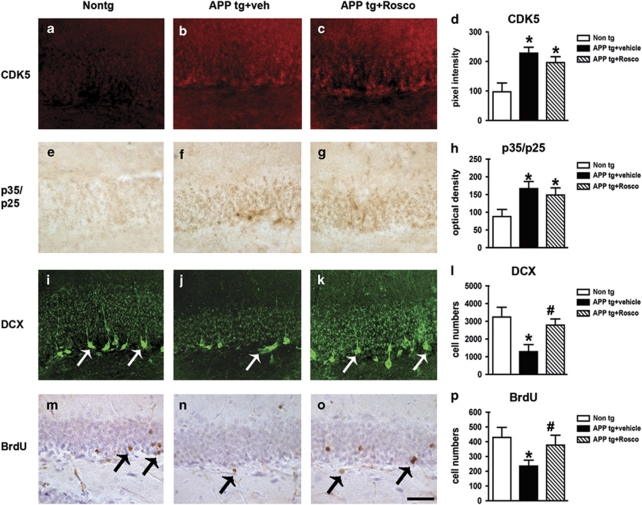Figure 8.
Roscovitine treatment rescues neurogenic deficits in the hippocampus of APP tg mice. Brain sections from 9-month-old APP tg mice and non-tg controls treated with Roscovitine or vehicle control and BrdU were processed for immunohistochemical analysis with antibodies against CDK5, p35/p25, doublecortin (DCX), or BrdU. All images are from the dentate gyrus of the hippocampus. (a–d) Analysis of CDK5 immunoreactivity in non-tg and APP tg mice treated with vehicle control or Roscovitine. (e–h) Analysis of p35/p25 immunoreactivity in non-tg and APP tg mice treated with vehicle control or Roscovitine. (i–l) Analysis of DCX immunoreactivity and the numbers of positive cells in non-tg and APP tg mice treated with vehicle control or Roscovitine. (m–p) Analysis of BrdU immunoreactivity and numbers of positive cells in non-tg and APP tg mice treated with vehicle control or Roscovitine. Scale bar=50 μm. *P<0.05 compared with vehicle-treated non-tg controls by one-way ANOVA with post hoc Dunnett's test. N=4 animals per group. #P<0.05 compared with APP tg mice by one-way ANOVA with post hoc Tukey–Kramer test. N=4 animals per group

